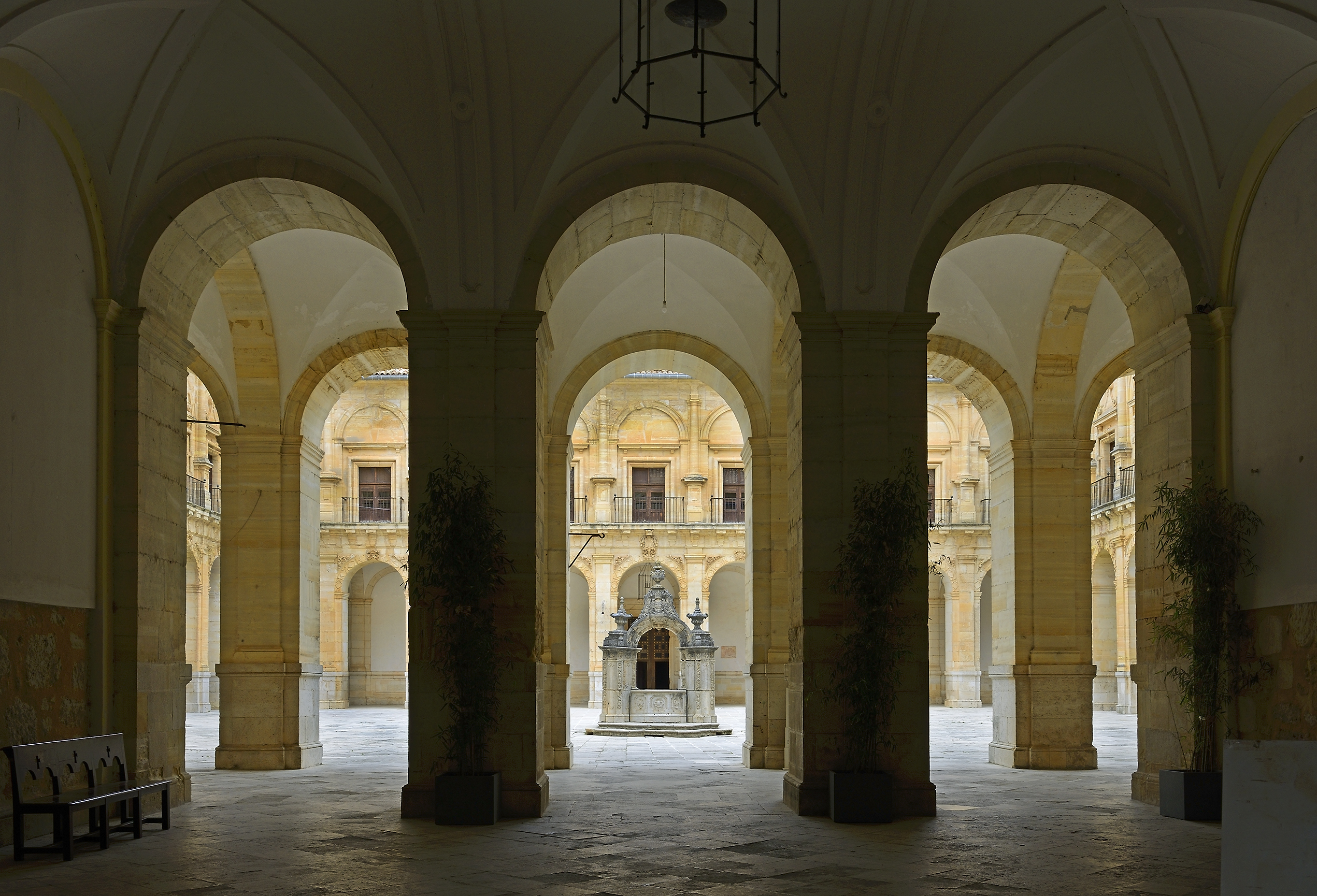The setting for countless films and series, only in the last century has Uclés seen figures such as Robert de Niro
(
The Bridge of San Luis Rey
) and
Viggo Mortensen
(
Alatriste
) parade through the palatial rooms of its impressive monastery
.
Though few Hollywood scripts top the true story of a local neighbor,
Fermina Oliva
, a survivor of the
Titanic
.
These are the surprises that a visit to this town in Cuenca, an hour from Madrid, with an extraordinary past as the headquarters of the once extremely powerful
Order of Santiago,
holds .
This yes yes, a story in capital letters, written at the same time with
the sword and the word
.
Construction of the Uclés Monastery began in the 16th century.
During the following 200 years it continued to grow and cast its shadow over the small village of La Mancha where today more than 200 souls live.
It was Alfonso VIII who donated the enclave to the people of Santiago in 1174. "The
warrior monks
settled in a previous castle and turned it into a fortress-convent," explains Ana Gálvez, a tourist guide in Uclés.
THE CLOISTER OF THE MONASTERY.SHUTTERSTOCK
But it is Felipe II who imprints grandeur on the walled enclosure.
He built the church, with no less than 65 meters of nave, which he commissioned from a disciple of Juan de Herrera himself, Francisco de Mora.
Suddenly the slate spiers rip the sky of Uclés.
El Escorial de La Mancha was
born
.
"It is a similarity in the distance," emphasizes the guide, but the name has stuck to our days.
The visitor who comes to this place in La Mancha today, however, will find much more than a trip to the past.
The pandemic, so dire for almost everything, has served to change the pace of the monastery.
A new museum route now fuses the richness of the complex with
light and sound projections
that surround the refectory, the sacristy and other spaces that are already spectacular, giving the traveler an excuse to return to Uclés.
The initiative has earned it recognition
as the best cultural project
in Castilla-La Mancha in 2021 and one of the fifty best in Spain, according to the Observatory of Culture prepared by the Contemporary Foundation.
the jewels of the monastery
There are many gems to discover in the monastery.
From its
plateresque façade
to the double
cloister with 36
semicircular arches.
From the Renaissance
coffered ceiling
of the refectory with the carved busts of 36 knights of the Order to the wonderful staircase adorned with the crosses of Santiago.
Somewhere in the crypt lie the
remains of the poet Jorge Manrique
.
And in one of its dark cells
Quevedo
was locked up , back in 1620.
The guide by the church door.
The proper names continue in the streets of small Uclés.
"The father of the actor Tony Leblanc, the doorman of
the Prado Museum
, was born in this house ," a neighbor spontaneously points out.
Another name is even more enigmatic.
It's Fermina's.
How did a girl from Uclés get to embark on
the most famous wreck
in the world ?
And how did she survive her tragic sinking?
the seamstress of the titanic
The fateful adventure of this seamstress can be known thanks to one of the
QR codes
that mark the main monuments and landmarks of the people of Cuenca.
Although as a guide, Ana knows the history by heart.
"She boarded the
Titanic
accompanying a married couple on their honeymoon. The night of the shipwreck, she was sewing a corset when she felt the blow to the hull, but she managed to enter one of the ships with his wife."
Wine cellar and gourmet products store in Uclés.
The walk through Uclés must include the
castle and its walls
, of course.
It is also worth seeing the granary, the Town Hall, the hermitage and the old
Cinco Caños
fountain , in front of the Puerta del Agua.
The
Fernández y Contreras palace house
, from the 16th century, is today a charming hotel and restaurant with a tempting Castilian patio.
Wine
lovers
will happily make a pilgrimage to Wine Victim, where they can also try a selection of gourmet products from the area, from Torrejoncillo cheeses to Jábaga Abbey chocolates.
The Roman city of Segóbriga
These places can be explored
in situ
, but if there is only time for one more travel distraction, it must be
Segóbriga
.
The Roman city, built on a ten-hectare hill a quarter of an hour away by car, is amazing for how
well preserved
it has been.
Archaeological Park of Segóbriga, in Saelices.
The visitor can wander through its amphitheater (with capacity for
5,000 spectators
), its circus and its theater almost as if it were in the first century. All this appears in the middle of nowhere... although so much wealth has an explanation: the extraction of
lapis specularis
, the mirror or translucent plaster that the Romans used as glass and that they would export from this corner of La Mancha to the entire empire.
practical Guide
WATCH.
Ucles Monastery
.
The monument hosts exhibitions, concerts, festivals, events... All the information at www.monasterioucles.com.
In addition, Uclés shows QR codes to know the history of the place in its key places.
TO EAT.
Pisto and other homemade dishes at
La posada de Perico
.
Wine, morteruelo, cheese and sweets from Cuenca at the
Wine Victim
wine cellar .
TO SLEEP.
Ucles Palace House.
Old manor house with a beautiful patio and signature restaurant.
From 85 euros/night.
DEPOSIT.
Segóbriga Archaeological Park
: The spectacular Roman city is an essential visit.
Open from Tuesday to Sunday.
More information on their website.
You can follow
El Mundo Viajes
on
,
and
Conforms to The Trust Project criteria
Know more

